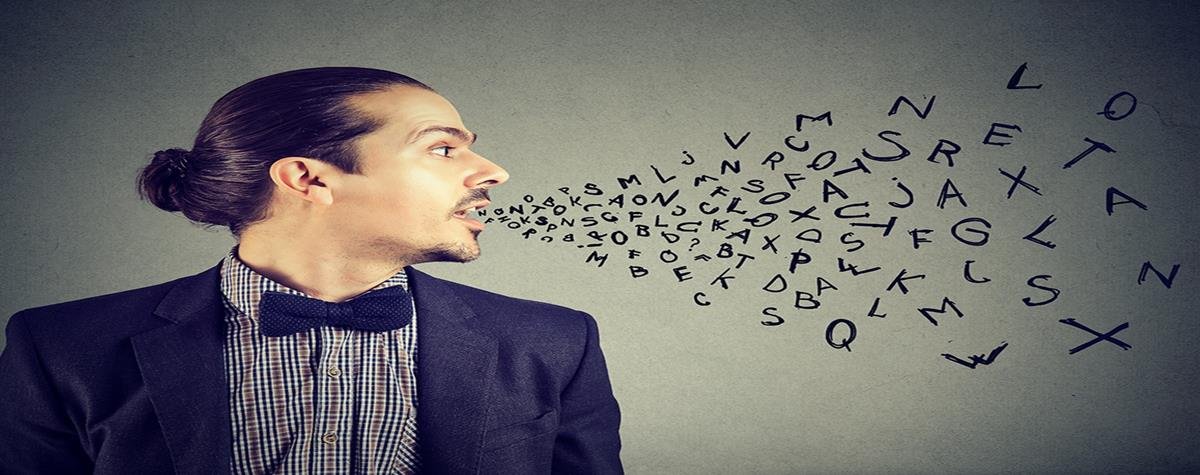If there is something common to all men, it is the pursuit of happiness. And who says happiness, says satisfaction of his expectations, wants and needs. For some, the need for esteem will come from having a very nice car, while for others it will be more from having a high position within the company.
In short, you have understood it whereas the number of our needs is limited, there is a multitude of desires allowing to satisfy them.
In this article, I’ll try to break down Abraham Maslow’s famous theory of needs a little bit further, looking to optimize how to use it to make it super profitable.
What is meant by the concept of needs?
General definition
If the dictionary is to be believed, a need is “a requirement for humans or animals, arising from nature or from social life. “
At the outset with the word requirement, we understand the imperative side of it. This implies that it is not optional but very vital. While there are things we can do without, like the latest iPhone model, we cannot do without food and drink.
We also understand, that being able to concern the animal or the man, there is a part of the needs which is inherent in the primitive constitution of the being. However, the end of the definition refers to “social life”, and therefore refers to aspects of life with fellow human beings, in society, more common in human beings.
In the field of personal development, Abraham Maslow’s theory, even if it was the object of certain criticisms (we will see it later), serves as a starting point for the analysis and the quest to understand the human behavior.
Needs according to Maslow’s theory
In short, Abraham Maslow was a 20th century American psychologist, made famous for his theory of motivating humans through the identification and prioritization of human needs.
He therefore modeled his theory in the form of a multi-storey pyramid, based on basic needs.
The psychologist defines the different levels of the pyramid in order of importance, starting with the most important (urgent) needs that man must meet. He thus defines:
– physiological needs: eating, drinking, reproducing; that we share with animals
– Security needs: satisfied by the desire to have a home, to be sure of earning enough money to meet the needs of the household
– Membership needs: referring to all the desires that fulfill the desire to feel part of a family or a social group
– Esteem needs: by esteem we must understand self-esteem, that is to say the need to be proud of who we are
– And the needs to be fulfilled: that is to say the needs to be fulfilled through the realization of our dreams, our projects.
The philosophy of Maslow’s theory:
The Pyramid of Needs.
It is important to understand that the use of the pyramid shape is not accidental, it is justified. by an obvious explanation.
Primary needs, therefore, form the basis, and the four upper “floors” can (according to Maslow’s theory) be satisfied only if the needs of the lower levels are met.
To illustrate it, it is very simple: a person who has difficulty eating and who sleeps in the street, will not seek to satisfy his need for Esteem, as long as he has not succeeded in satisfying his needs. elementary.
However, if the number of needs is limited, the possibilities to meet them are endless. The need for security may be met by the desire to acquire a large defense dog for some people, by the desire to have a firearm for others, and by the fact of filling one’s home with alarms for others. other.
The esteemed need may be satisfied by being on TV for some while others will swear by having a sports car.
Criticisms of the theoretical model
Even if the theory of needs developed by Abraham Maslow serves as a benchmark in the analysis of human needs, it is still called into question in certain aspects.
First of all concerning the respect of an order of satisfaction of needs. The example I took a few lines above is the best illustration of this. We are seeing more and more behaviors that Maslow would consider irrational.
The best example, to illustrate it, is certainly the need for esteem leading some people to prefer to acquire the very latest iPhone, rather than to eat properly. This is a caricatural example, of course, but one that we encounter more and more.
Scientists even go so far as to say that in the 21st century an individual’s personality, his “socio-style”, would directly influence his attitude. An individual would act differently depending on whether he or she attaches more importance to the action and the tasks at hand, rather than to individuals, to people.
In addition, another ingredient would upset the model’s postulates: its relationship to power.
Another critic, and perhaps even LA, a major critic who comes up regularly on Maslow’s theory of needs, is not on the substance but on the methodology used by his theorist to establish it.
The non-representativeness of the sample of people studied by the American psychologist (majority of white men of the same social level) would render the results obtained obsolete.
Why is MBTI a solution to increase our wholeness?
Reminder of what MBTI is
Before starting this part it is important to review what the MBTI is, the Myers Briggs Type Indicator. It is a personal development tool based on the assessment of the psychological profile of the person.
Named for its founding theorists, Katherine Cook Briggs and her daughter Isabel Briggs Myers, this model is based on the work of Swiss psychologist Carl Gustav Jung, and on the psychological preferences of each human being in four areas:
– the privileged way we find our energy: extroverted by seeking social interactions or introverted, by isolating ourselves from the world
– the way we collect information, using primarily our 5 senses (sensitive mode), or rather our intuition
– the channel for which we will naturally choose to react, preferably using our logic or preferably our heart
– and finally our lifestyle, determined above all by our relationship to time
The result is the constitution of a matrix made up of 16 different profiles, the “types”, which describe with formidable precision the 16 personalities comprising 100% of the population.
We can also say that many psychologists relied on this particularly relevant work during the second part of the twentieth century.
One of them, David Keirsey, managed to highlight 4 major groups (which he will call “temperaments”):
– the “Idealists”
– the “Project Craftsmen”
– the “Guardians of traditions”
– and the “Rationals”
It would be possible to further develop all the lessons that can be learned from this work for hours. However, in this last part of the article we will focus on how one can relate and use this work with Abraham Maslow’s theory of needs.
Learn to understand your priorities
When I write that MBTI can help you increase your level of fulfillment, I mean that by realizing and understanding your own functioning (which is personal to you), you can successfully maximize your wholeness.
By breaking down your natural behavior, trying to understand why you like a certain activity and dislike a certain environment, I am convinced that you can achieve greater control (that is the term) of your personal achievement!
Certainly the behavior of man (or animal for that matter), influenced by 4000 years of “Darwinian” evolution, means that we are not attracted by what is unpleasant to us (burning ourselves with fire for example. ) and vice versa.
But if we manage to dismantle our own cognitive functioning, to break down and better understand the why of our reactions, we have an incredible lever to accelerate our learning system.
I will not go into the details of each profile here, it would be much more precise but a bit long.
Simply by limiting oneself to the 4 temperaments mentioned above, it is possible to understand, for example, that an individual belonging to the “group of craftsmen” will have a need intrinsic to his nature to seek to develop projects. He will systematically seek to undertake 1000 and one new activities without necessarily going to the end.
Knowing this, one can imagine that the importance of the need for security in him, is much less than a person of the temperament “guardian of traditions”. Indeed, for the latter, the priority being above all the preservation of the frame, all the changes (especially if they are brutal) are a source of discomfort. In a person of this group, therefore, the importance of the need for security will be higher than the average person.
On the other hand, in her, the need for esteem will be less essential than in an individual of the “temperament” of craftsmen.
As we have just seen, each person can, by improving their knowledge of themselves, dissect and understand their own Maslow pyramid.
Understanding the needs most essential to your MBTI “temperament”
Following the same logic, it is possible to try to describe for each of the 4 temperaments, the needs that will be the most essential to satisfy.
The premise of this reflection is to say that according to our cognitive preferences (therefore innate) we do not attach the same importance to the satisfaction of our different needs.
The Temperament of the “Idealists”:
Giving great importance to the image they send of themselves, people belonging to one of the 4 “MBTI types” of the “idealists” group, attach greater importance to the satisfaction of 2 needs. :
– the need for esteem
– the need to come true
Conversely, lost in their daydreams, vital needs as essential as physiological needs (eating, drinking, sleeping …) can be neglected! It is not uncommon for people of this temperament to forget to eat enough.
The Temperament of “Project Craftsmen”:
The individuals of the 4 MBTI profiles of the family of “craftsmen” (of projects) all share the Sensitive function to collect their information in their daily life. They therefore use all their 5 senses instinctively and are therefore naturally very oriented towards the satisfaction of sensory pleasures.
So, unlike “idealists,” they generally pay much more attention to physiological needs.
On the other hand, having a hundred thousand projects running all the time, it makes perfect sense to think that the need for self-realization and the need for security can be neglected. They will take risks very (too?) Easily.
The Temperament of the “Guardians of Traditions”:
In the “guardians” certain needs are even more essential to be satisfied than in beings of the other 3 temperaments: first, physiological needs. Being very attached to the practicality of things in life, they systematically ensure that they and their loved ones have something to “survive” (more than reason). The term is a bit strong, but it should be understood that for people belonging to the 4 “types” of this group, it is essential to satisfy basic needs as a priority.
They also dislike changes by their very nature and seek to preserve traditions. So the need for security is more developed with them than with most people.
The Temperament of “Rationals”:
Finally, the 4 “MBTI types” that we group together in the “rational” family have in common that they love challenges. In this sense, they particularly appreciate intellectual stimulation. We can therefore think that the need for self-esteem has a more important place in Maslow’s pyramid than that which theory gives it (I am talking about the way they look at themselves).
Likewise, individuals belonging to the 4 profiles of this temperament generally have a greater than average propensity to seek fulfillment (joining the “craftsmen” on this point).
They especially like to take up challenges and solve problems. These characteristics justify their wanting more than reason to see their projects through to the end.
Conversely, being insensitive to everything related to emotional domains, it is logical to understand that “rational” people do not attach as much importance as other “types” to the need for esteem. coming from the outside world. After all, they do not care about other people’s eyes!
This also explains why the need to belong is almost non-existent among them. What you have to understand by this is that they are much less sensitive to the affection that other people have for them. They really aren’t addicted to it anyway!
Conclusion:
As we saw in the last part of my article, each of us will give more or less importance to a particular category of needs according to our MBTI “temperament”. But by continuing this process, it is possible to further refine this analysis and arrive at a Pyramid, specific to each of the 16 personalities described by the psychologists of the MBTI … What better way to understand human behavior!













